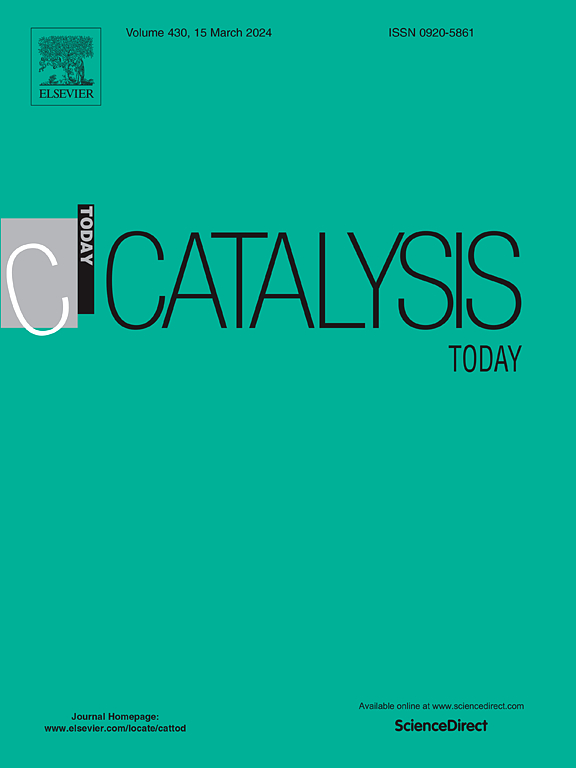Efficient CeO2 decoration of Fischer-Tropsch catalysts through atomic layer deposition
IF 5.2
2区 化学
Q1 CHEMISTRY, APPLIED
引用次数: 0
Abstract
The development of efficient catalysts for the Fischer–Tropsch synthesis (FTS) was investigated using atomic layer deposition (ALD) for the controlled promotion of Co/γ-Al2O3 catalysts with CeO2. The deposition of ultra-low Ce loadings (<0.05 wt%) via ALD led to the formation of new active surface sites, as evidenced by DRIFTS-CO studies, and significantly modified the catalytic performance under FTS conditions (10 bar, 230 °C). Catalysts decorated with CeO2 via ALD exhibited enhanced activity and altered hydrocarbon selectivity compared to unpromoted Co/γ-Al2O3. The sequence of CeO2 incorporation using ALD proved to be decisive for catalysts performance. When CeO2 was deposited on previously impregnated Co/γ-Al2O3, the catalysts showed improved selectivity toward C5+ hydrocarbons. In contrast, materials where cobalt was impregnated onto CeO2-predecorated supports exhibited higher activity but experienced deactivation and a shift in product distribution toward light gases (C1-C4) and gasoline-range hydrocarbons. These results highlight the potential of ALD as a precise and effective approach to optimize promoter effects of oxides in Co-based FTS catalysts.
原子层沉积法对费托催化剂的高效CeO2修饰
采用原子层沉积(ALD)技术研究了Co/γ-Al2O3催化剂在CeO2催化下的催化作用。drift - co研究表明,通过ALD沉积的超低Ce负载(<0.05 wt%)导致了新的活性表面位点的形成,并显著改善了在FTS条件下(10 bar, 230 °C)的催化性能。与未促进的Co/γ-Al2O3相比,通过ALD修饰CeO2的催化剂表现出增强的活性和改变的碳氢化合物选择性。结果表明,ALD掺杂CeO2的顺序对催化剂的性能有决定性影响。当CeO2沉积在预先浸渍的Co/γ-Al2O3上时,催化剂对C5+碳氢化合物的选择性有所提高。相比之下,将钴浸渍在ceo2预装饰支架上的材料表现出更高的活性,但经历了失活,并且产品分布向轻气体(C1-C4)和汽油级碳氢化合物转变。这些结果突出了ALD作为优化co基FTS催化剂中氧化物促进剂效应的精确有效方法的潜力。
本文章由计算机程序翻译,如有差异,请以英文原文为准。
求助全文
约1分钟内获得全文
求助全文
来源期刊

Catalysis Today
化学-工程:化工
CiteScore
11.50
自引率
3.80%
发文量
573
审稿时长
2.9 months
期刊介绍:
Catalysis Today focuses on the rapid publication of original invited papers devoted to currently important topics in catalysis and related subjects. The journal only publishes special issues (Proposing a Catalysis Today Special Issue), each of which is supervised by Guest Editors who recruit individual papers and oversee the peer review process. Catalysis Today offers researchers in the field of catalysis in-depth overviews of topical issues.
Both fundamental and applied aspects of catalysis are covered. Subjects such as catalysis of immobilized organometallic and biocatalytic systems are welcome. Subjects related to catalysis such as experimental techniques, adsorption, process technology, synthesis, in situ characterization, computational, theoretical modeling, imaging and others are included if there is a clear relationship to catalysis.
 求助内容:
求助内容: 应助结果提醒方式:
应助结果提醒方式:


